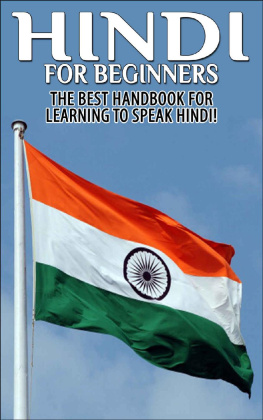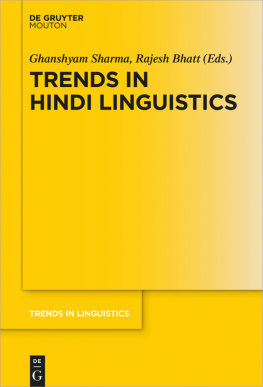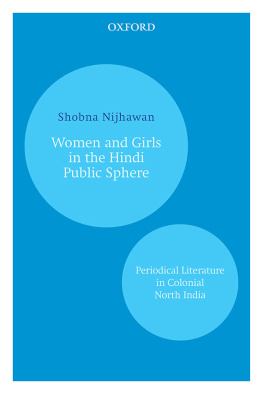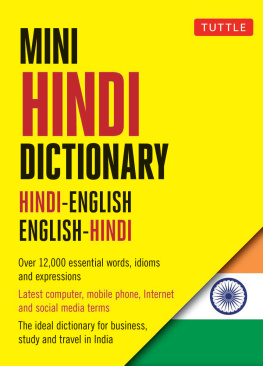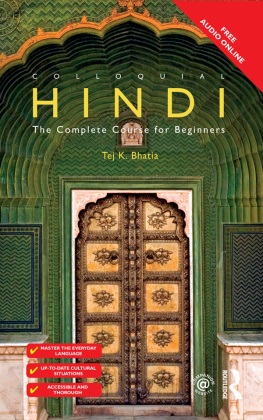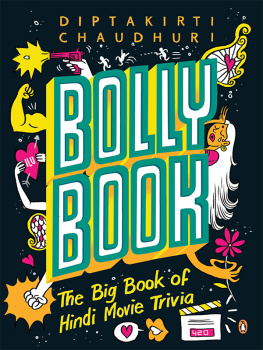Hindi For Beginners
BY GETAWAY GUIDES
The Best Handbook for Learning to Speak Hindi
nd Edition
Copyright 2014 by Getaway Guides - All rights reserved.
In no way is it legal to reproduce, duplicate, or transmit any part of this document in either electronic means or in printed format. Recording of this publication is strictly prohibited and any storage of this document is not allowed unless with written permission from the publisher. All rights reserved.
Table Of Contents
Introduction
Chapter 1 The Hindi Basics
Chapter 2 Hindi Alphabet
Chapter 3 Hindi Grammar
Chapter 4 Intermediate Lessons
Chapter 5 Conversational Phrases
Chapter 6 Finding Accommodation
Chapter 7 Booking a Hotel Room
Chapter 8 Hindi Hotel Phrases to Remember
Chapter 9 Asking for Directions
Chapter 10 Eating Out
Chapter 11 Going Shopping
Chapter 12 Tips and Tricks to Learning Hindi Easily
Conclusion
Preview Of The Best of England For Tourists'
Check Out My Other Books
Introduction
I want to thank you and congratulate you for downloading the book , Hindi for Beginners .
This book contains proven steps and strategies on how to learn Hindi fast.
Learning a new language can be exciting and frightening at the same time. You have to understand vocabulary words as well as the grammar rules and how to pronounce it. Learning the Hindi language is no different.
Hindi comes from Ancient language known as Sanskrit and has evolved through time. Hindi is a beautiful language that is used in many Indian stories and poetry as well as sacred texts. Also, more and more Indian films are bring produced and learning how to speak Hindi can help you understand it better.
Hindi is the one of the main languages spoken in India. Nearly 425 million speak Hindi as their native language and almost 120 million people learned it as their second or third language. You may find familiar Hindi words like yoga, karma, avatar and guru. By learning how to speak Hindi, you are joining the ranks of people who use it socially or professionally. This enables you to communicate with the locals and may even inspire other people to learn Hindi as well.
The Hindi language can be especially challenging for people with Western language but it is not impossible to learn. Also, do not forget that learning new phrases and words can also be a lot of fun. Listen to native speakers and try to emulate their accent as much as you can. Do not be afraid of committing mistake and keep practicing to improve your skill.
Thanks again for downloading this book. I hope you enjoy it!
Chapter 1 The Hindi Basics
Hindi is now considered as the modern language of India but it took some time before it reached its status. The modern Hindi originated from khariboli which is the original language used in Delhi. Khariboli was called as Urdu during the 17 th century. It became the Hindi-Urdu which is the same language spoken in modern India. Some people still speak Urdu in some parts of Pakistan.
Modern Hindi became Indias official language in 1950. It was used on all government papers and official documents. India English is also prominently used so most westerners can understand it to an extent.
While the national government released a statement that standardized the use of Hindi in all documents, many districts still use their own dialects. Some of these dialects sound very similar to Hindi.
Today, over 480 million people speak the Hindi language and it is spoken mostly in Pakistan, Fiji, Bangladesh and Nepal.
Learning Hindi can be challenging for people from the West. Just like learning any language, Hindi can also be very educational and fun. One thing to remember in learning a new language is that you have to be patient and give it some time. Do not be upset if you do not get the language right away and keep improving your skill.
Pronunciation
Hindi pronunciation is often said to be easy for beginners. However, there are still some factors that can affect your pronunciation if you are not careful. The best way to learn how to pronounce is by listening to other people. It is best to hear it from the locals but you also have to be sure that they are pronouncing the words correctly. Mispronunciation is common to native speakers as well.
If you decide to listen to Hindi speakers to observe their pronunciation, it is better if you focus on how the consonants are being uttered. Consonants in Hindi and English vary dramatically. There are also few sounds in the Hindi language that is not present in English. However, for the most part, many of the consonants in Hindi have similar corresponding consonants in English. Focusing more on the difference can help you speak the language at the shortest amount of time possible.
Chapter 2 Hindi Alphabet
The Hindi alphabet is very different from the English alphabet. It is more complex and is rooted in ancient language. It is also one of the most ornate and developed writing system known.
Indian culture shares some similarities with Arabic which can be seen in their alphabets. In general, the Hindi alphabet is very complicated for beginners in its written form.
Written Hindi is in a continuous stream with some of the letters placed on the top. This makes it beautiful to look at and can be compared with some of the best forms of calligraphy in the world. Learning the Hindi language is essential if you want to use a Hindi dictionary later on.
The Hindi alphabet also uses different letters to express slight difference in the sound. This is not uncommon in the language so you have to take into account the differences especially if you are learning from a document and dont have someone who can pronounce it correctly for you.
Vowels
Vowels are the building blocks of any language. Hindi has 13 vowels which are combined with consonants to form words. Hindi is a phonetic language and learning how the vowels and consonants are pronounced is essential in learning the language.
Consonants
The Hindi language has 33 consonants. It is crucial to learn the sounds of the consonants since the words and phrases are derived by combining these sounds.
Here are the romanticized Hindi letters and their English pronunciation:
- K- like the k in kite
- Kh- similar to ka but with more noise breathing out
- G- G as in grow
- Gh-similar to ga but with more noise breathing out
- n( with a little dot on top)- this is a consonant used in both Hindi and Sanskrit. This consonant is rarely used in Hindi words. It similar to the n in anga if it is spoken fast.
- C- like the c in the word chanting
- Ch- Aspirated version of c. Pronounced like ca
- J- similar to the j in jaded
- Jh- similar to j with a lot of air.
- Nya- similar to the n in name
- T- similar to t in tarpaulin
- Th- similar to t but with a lot of air
- D- similar to d in dance
- Dh- aspirated version of d
- N- similar to the n in nail but a little bit stronger.
- P- similar to the p in the word pack
- Ph- similar to the f in flower
- B- similar to b in basket
- Bh- this is the aspirated version. Pronounced like b in abhor
- M- similar to the m in manner
- Ya- similar to the y in yard
- R- similar to r in rattle
- L- similar to l in likeable
- V- similar to v in navel
- S- similar to s in sandal
- H- similar to h in handle
Chapter 3 Hindi Grammar
Just like learning any new language, one of the best ways to learn Hindi is to compare it to English. Hindi language is also heavily rich in subjects, objects and verbs but with some differences to English. Learning the difference can be a good way to understand the language better. For example, Hindi verbs are normally paced at the end of the sentence and it uses postpositions instead of prepositions in English.
Next page
